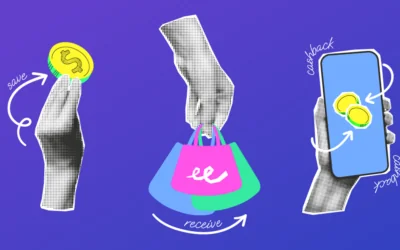- Banking analytics is undergoing an endless transformation thanks to the advancement in several fields, propelled by AI and machine learning
- In Data Science, predictive analytics are helping to forecast loan defaults, detect fraud and offer personalization.
- NLP in banking is opening a whole new frontier for financial institutions, enabling them to derive insights from various sources of written information.
With the vast amount of data generated by banking transactions, banking analytics helps banks to optimize their operations, increase efficiency, and identify opportunities to grow their business. Evolving fields like data science, NLP in banking and robotic process automation (RPA) have allowed banks and financial institutions to extract valuable insights from data, automate tedious tasks, and improve customer experience at a steady rate.
In this article, we will discuss the 3 main advancements revolutionizing banking analytics.
1. Data Science in banking
One of the most relevant factors to help banking analytics evolve is data science, as artificial intelligence and machine learning are central within banks’ operations. In particular, predictive analytics involves the use of historical data to identify patterns and make predictions about future trends. In banking, it can be used for a range of purposes, including:
– Loan defaults: banks can use predictive analytics to forecast loan defaults by analyzing a borrower’s credit history, income, and other relevant factors. This helps banks to identify high-risk borrowers and adjust their lending policies accordingly.
– Fraud detection: banks can use predictive analytics to detect fraudulent activities by analyzing patterns in customer transactions. This helps banks to prevent fraudulent activities before they occur and minimize losses.
– Customer behavior: banks can analyze customer behavior data to offer personalized products and services. For example, a bank can use data to recommend a credit card with rewards that are tailored to a customer’s spending habits.
2. NLP in banking
One of the most interesting areas related to banking analytics is NLP in banking. NLP – natural language processing – is an interdisciplinary subfield of linguistics, computer science, and artificial intelligence concerned with the interactions between computers and human language, in particular how to program computers to process and analyze large amounts of natural language data.
NLP uses artificial intelligence to analyze and understand human language. In banking, NLP can also help identify trends in customer behavior, which can be used to improve customer service and develop targeted marketing campaigns.
The financial industry has long relied on data to forecast economic shifts and potential market moves. However, the use of natural language processing (NLP) to analyze textual data is opening a whole new frontier for banks and financial institutions. At its most basic, the technology enables organizations to derive insights from written information such as news articles, advertisements, social media and reports. This allows financial institutions to gain insights into customer preferences and complaints, by carrying out sentiment analysis and delivering top-notch personalization.
Strands Data Analytics solutions
Data is at the core of Strands’ solutions, providing state-of-the art banking analytics through AI and NLP in banking.
Our hybrid categorization engine and merchant tagger enable banks and financial institutions worldwide to easily categorize raw transactional data from various sources such as banking and open finance data, so that users can better understand their spending patterns. Recurring patterns and customer behavior are used to create a comprehensive overview of scheduled payments and subscriptions, and alert users promptly if there is an unusual transaction. This empowers users to manage their finances better and feel like they have a reliable partner in financial management.
In addition, our platform uses real-time analysis of customer behavior to generate personalized dashboards with highly accurate predictions such as credit scoring, cash-flow alerts, saving goals, and fraud detection. Users receive insights and notifications through the most suitable communication channel. This helps users have a future view of their financial situation and make informed decisions.
Jump to the dedicated section of our website to learn more about our data journey and how it can revolutionize your banking analytics processes:
3. Robotics process automation
RPA is another technology that is gaining traction in the banking industry. RPA is a software technology tool that is able to recreate human tasks, especially simple and repetitive, more accurately, faster, and at a higher level.
Robotic process automation (RPA) has been increasingly adopted by financial institutions in recent years, and with good reason. One of the biggest advantages of RPA in finance is its ability to improve efficiency and accuracy in various repetitive tasks such as data entry and reconciliation, freeing up human resources for more complex tasks. RPA also reduces the risk of errors and fraud by eliminating the need for manual data entry. Additionally, RPA can operate 24/7, allowing financial institutions to increase their operational hours and ultimately improve customer service.
The banking industry is undergoing a significant transformation with the adoption of advanced technologies like banking analytics, NLP in banking, RPA, and data science. These technologies are helping banks to gain a competitive edge by improving operational efficiency, enhancing customer service, and developing targeted marketing campaigns. As these technologies continue to evolve, we can expect to see even more innovative solutions that will drive the banking industry forward.



